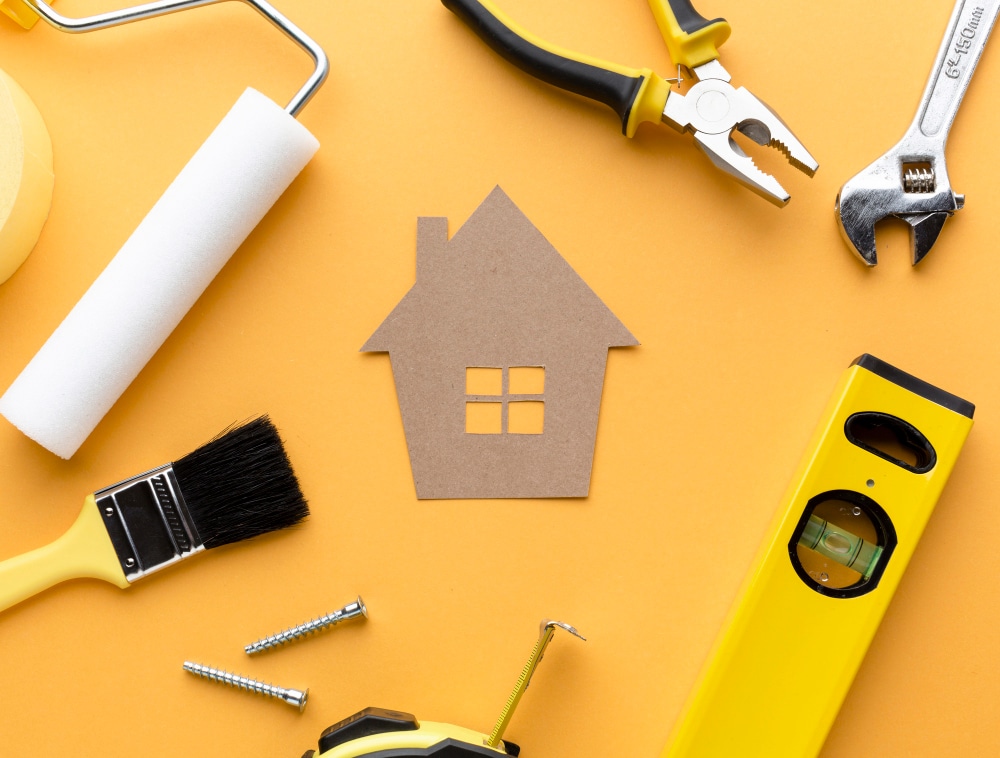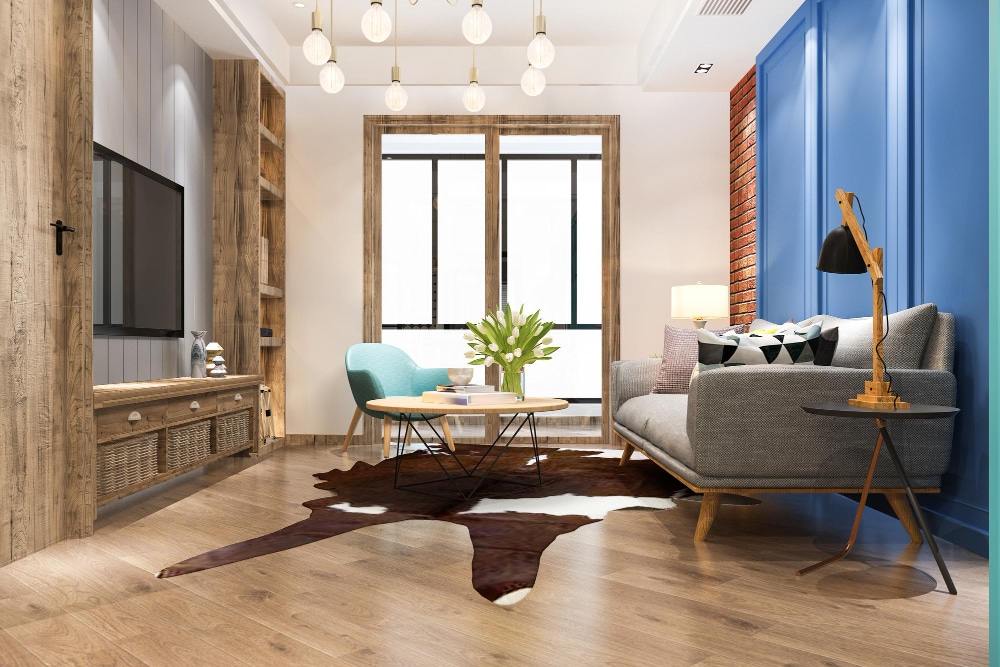
Baby Boomer Home Remodeling Trends and Their Impact on the Remodeling Industry: The “Ripple Effect” | 2024 Ultimate Edition
The impact of baby boomer home remodeling trends are reshaping the remodeling industry as they transition into retirement. Rather than simply kicking back and relaxing, they’re actively redefining what it means to have a home that fits their lifestyle, needs, and aspirations. This seismic shift is creating a ripple effect, influencing design preferences, technological integrations, and sustainability practices within the industry. Let me layout these trends briefly below and explore how they’re molding the future of home design and functionality.
Contents
- Baby Boomers’ Approach to Home Renovation: Personalization, Accessibility, and Sustainability
- 1. Active Engagement in Home Renovation:
- How These Trends Affect the Home Remodeling Industry
- The Influence on Home Design
- Meeting the Needs: A Guide to Baby Boomer-Friendly Remodeling
- The Economic Impact
- Wrapping Up
- Frequently Asked Questions
- Q1: Why are baby boomers driving the home remodeling industry?
- Q2: What are age-in-place modifications, and why are they important?
- Q3: How do baby boomers contribute to sustainability in home remodeling?
- Q4: What challenges do homeowners face when remodeling their homes?
- Q5: How can homeowners stay informed about baby boomer home remodeling trends?
Baby Boomers’ Approach to Home Renovation: Personalization, Accessibility, and Sustainability
1. Active Engagement in Home Renovation:
Baby boomers are not content with passive retirement; they’re engaging in home remodeling projects to create spaces that cater to their evolving needs. This proactive approach reflects their desire for homes that support their lifestyle choices and future plans.
2. Personalization and Customization:
Unlike previous generations, baby boomers are seeking personalized and customized solutions for their homes. They want spaces that reflect their individual tastes and preferences, leading to a surge in demand for tailored remodeling services.
3. Emphasis on Accessibility and Safety:
With an eye towards aging in place, baby boomers are prioritizing accessibility and safety in their home remodeling projects. This focus ensures that their homes remain comfortable and functional as they age, fostering independence and peace of mind.
4. Integration of Technology:
Baby boomers are embracing technology to enhance the functionality and convenience of their homes. From smart thermostats to automated lighting systems, these technological integrations are becoming increasingly common in remodeling projects, catering to the desire for modern amenities and ease of use.
5. Commitment to Sustainability:
Sustainability is a key consideration for baby boomers, driving the adoption of eco-friendly practices and materials in home remodeling. From energy-efficient appliances to renewable energy solutions like solar panels, this commitment to sustainability reflects their desire to minimize their environmental impact and reduce long-term costs.
How These Trends Affect the Home Remodeling Industry
1. Increased Demand for Specialized Contractors: Surge in Specific Remodeling Needs
Recent industry data reveals a notable surge in specific remodeling needs, particularly among the baby boomer demographic. From age-in-place modifications to energy-efficient upgrades, homeowners are seeking tailored solutions to meet their evolving needs.
Age-in-Place Modifications:
- According to the Joint Center for Housing Studies of Harvard University, the number of Americans aged 65 and older is expected to reach over 79 million by 2035, representing a significant demographic shift towards an aging population. This demographic trend underscores the growing demand for age-in-place modifications in home remodeling projects.
- Research conducted by the National Association of Home Builders (NAHB) indicates that nearly 80% of remodelers have observed an increase in requests for age-in-place modifications, such as grab bars, wheelchair ramps, and lever-handled doorknobs, with a substantial portion of these requests coming from the baby boomer demographic.
2. Opportunity for Specialized Contractors
This surge in demand has created a ripe opportunity for specialized contractors. Professionals with expertise in creating accessible and energy-efficient homes are finding themselves in high demand, with some reporting a 20% increase in business over the past year alone.
Energy-Efficient Upgrades:
- The U.S. Energy Information Administration (EIA) reports that residential energy consumption accounts for approximately 20% of total energy use in the United States. As homeowners become increasingly conscious of energy costs and environmental sustainability, there is a growing demand for energy-efficient upgrades in home remodeling.
- A survey conducted by the National Association of Realtors (NAR) found that over half of homebuyers consider energy-efficient features to be “very important” when purchasing a home. This heightened awareness of energy efficiency translates into a greater willingness among homeowners, particularly baby boomers, to invest in energy-saving improvements during the remodeling process.
3. Tailored Services for the Baby Boomer Market
This trend presents an opportunity for contractors to niche down and offer tailored services that directly cater to the unique needs of baby boomers. By tapping into this growing market, contractors can expand their client base and position themselves as experts in a niche segment of the industry.
Surge in Demand for Specialized Contractors:
- Industry reports from the National Association of the Remodeling Industry (NARI) indicate a substantial increase in demand for specialized contractors with expertise in age-in-place modifications and energy-efficient upgrades. NARI’s Remodeling Business Pulse survey reveals that 65% of contractors specializing in these areas reported a significant uptick in business over the past year.
- Additionally, data from the Bureau of Labor Statistics (BLS) highlights a growing need for skilled tradespeople in the construction industry, particularly in specialized fields such as carpentry, plumbing, and electrical work. This increased demand for specialized labor further underscores the opportunities available for contractors with expertise in meeting the specific remodeling needs of baby boomers.
By leveraging these insights and statistics, contractors can better understand the market dynamics driving the increased demand for specialized remodeling services among the baby boomer demographic. This knowledge empowers contractors to tailor their services to meet the evolving needs of this growing segment of homeowners, thereby positioning themselves for success in a competitive industry landscape.
Sources:
- Joint Center for Housing Studies of Harvard University – “Projections and Implications for Housing a Growing Population: Older Adults 2015-2035” (Click here to read more)
- National Association of Home Builders (NAHB) – “Remodeling Impact Report: Aging in Place”
- U.S. Energy Information Administration (EIA) – “Residential Energy Consumption Survey” (Click here to read more)
- National Association of Realtors (NAR) – “2019 Profile of Home Buyers and Sellers” (Click here to read more)
- National Association of the Remodeling Industry (NARI) – Remodeling Business Pulse Survey (Click here to access the homepage)
- Bureau of Labor Statistics (BLS) – Occupational Outlook Handbook (Click here to access the homepage)
The Influence on Home Design
Rise of Open Floor Plans
Over 70% of homebuyers prefer homes with open layouts, citing reasons such as improved traffic flow and increased natural light. This preference is directly influenced by the desire for functionality, comfort, and connectivity—key principles driving baby boomer home remodeling trends.
Integration of Smart Home Technologies
The growing popularity of smart home technologies is undeniable. Consumers are increasingly gravitating towards devices that enhance convenience and efficiency, from voice-controlled thermostats to automated lighting systems.
Embrace of Outdoor Living Spaces
Outdoor living spaces have seen a surge in demand, surpassing even home offices and mudrooms in popularity among homeowners. This growing emphasis on outdoor living reflects a desire to blur the lines between indoor and outdoor spaces, creating seamless transitions that embrace nature and promote relaxation.
Meeting the Needs: A Guide to Baby Boomer-Friendly Remodeling
Step-by-Step to Creating an Accessible Home
Creating an accessible home requires thoughtful planning and design. Start with an assessment of current and future mobility needs, followed by modifications such as installing ramps, remodeling bathrooms for wheelchair accessibility, and incorporating smart technology for easier home management. Each step should enhance livability without sacrificing aesthetic appeal.
Incorporating Energy Efficiency
To incorporate energy efficiency into a remodeling project, begin by evaluating your home’s current energy usage. Upgrading insulation, windows, and doors can significantly reduce energy loss. Transitioning to LED lighting and energy-efficient appliances further contributes to a greener home. For those willing to invest in long-term savings, solar panel installations offer a sustainable power solution.
Designing for Comfort and Safety
Comfort and safety go hand in hand when remodeling for the baby boomer generation. Ergonomic designs, easy-to-use fixtures, and non-slip flooring are essential for creating a safe living environment. Additionally, integrating technology for health monitoring and security can provide peace of mind for both homeowners and their families.
The Economic Impact
Boost in the Home Remodeling Market
Research conducted by leading industry analysts reveals a substantial surge in the home remodeling market, largely propelled by the baby boomer remodeling trend. According to recent data from the National Association of Home Builders, remodeling spending among baby boomers has increased by over 10% in the past year alone. This uptick in spending isn’t limited to cosmetic updates; it’s driven by a demand for specialized services and sustainable products.
For instance, there’s been a notable increase in requests for energy-efficient upgrades such as solar panel installations and smart home technologies. This surge in demand has created a ripple effect throughout the industry, contributing to job creation and fostering innovation in home design and construction techniques.
Challenges and Opportunities for Homeowners
While the remodeling boom presents exciting opportunities for homeowners, it also brings forth a set of challenges. One of the primary challenges is balancing budget constraints with the desire for quality and sustainability. Research conducted by the Joint Center for Housing Studies at Harvard University indicates that while homeowners are willing to invest in remodeling projects, they often face difficulties in managing costs effectively. This highlights the importance of careful planning and prioritization to ensure that remodeling projects deliver the desired results within budgetary constraints.
Additionally, homeowners must navigate the complexities of the remodeling process, from selecting contractors to choosing materials and finishes. However, with the right guidance and expertise, homeowners can make informed decisions that maximize the return on investment and lead to long-term satisfaction with their remodeled spaces.
Wrapping Up
Reflecting on Boomer Influence on Home Remodeling
As we conclude our exploration of baby boomer home remodeling trends, it’s clear that this generation is reshaping the landscape of the home remodeling industry. Their preferences and priorities are driving a shift towards sustainability, accessibility, and smart living, setting the pace for the future of home design and functionality. From age-in-place modifications to energy-efficient upgrades, baby boomers are not just updating their homes; they’re redefining what it means to live comfortably and independently as they age.
Looking Ahead to Future Innovations
The main question remains: how will we continue to innovate and adapt our living spaces to meet the diverse needs of the baby boomer generation and beyond? The journey is just beginning, and the possibilities are as exciting as they are endless. With advancements in technology and a growing awareness of the importance of sustainable living, the future of home remodeling holds immense potential for creating spaces that enhance quality of life for all generations.
Whether you’re a homeowner considering a remodel or a professional in the industry, staying attuned to these trends is crucial for navigating the future successfully. If you’re inspired to start your own baby boomer-friendly home remodeling project, don’t hesitate to reach out today. Our team of experts is here to guide you every step of the way, helping you create a home that meets your needs now and in the future. Let’s embark on this journey together and create spaces that truly reflect the evolving lifestyles and aspirations of today’s homeowners.
Frequently Asked Questions
Q1: Why are baby boomers driving the home remodeling industry?
Baby boomers are reshaping the home remodeling industry as they transition into retirement. Instead of simply relaxing, they’re actively remodeling their homes to fit their evolving needs and lifestyles. This trend is driven by a desire for comfort, functionality, and sustainability, influencing design preferences and technological integrations within the industry.
Q2: What are age-in-place modifications, and why are they important?
Age-in-place modifications are adjustments made to homes to make them more accessible and safer for aging individuals. These modifications include installing grab bars, widening doorways, and incorporating step-less entryways. They’re important because they allow baby boomers to remain in their homes comfortably and independently as they age, promoting a sense of security and peace of mind.
Q3: How do baby boomers contribute to sustainability in home remodeling?
Baby boomers prioritize sustainability in their home remodeling projects by opting for energy-efficient appliances, sustainable materials, and eco-friendly practices. This commitment to sustainability not only reduces their environmental footprint but also leads to long-term cost savings. By incorporating green elements into their remodels, baby boomers are contributing to a more sustainable future.
Q4: What challenges do homeowners face when remodeling their homes?
Homeowners face challenges such as balancing budget constraints with the desire for quality and sustainability. Research indicates that managing remodeling costs effectively can be difficult, highlighting the importance of careful planning and prioritization. Additionally, homeowners must navigate the complexities of the remodeling process, from selecting contractors to choosing materials and finishes.
Q5: How can homeowners stay informed about baby boomer home remodeling trends?
Homeowners can stay informed about baby boomer home remodeling trends by seeking out reliable resources and staying engaged with industry updates. Organizations like the AARP provide comprehensive guides on age-friendly home modifications, while government websites offer valuable information on energy-efficient appliances and sustainable practices. By staying attuned to these trends, homeowners can make informed decisions about their remodeling projects.





